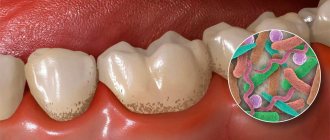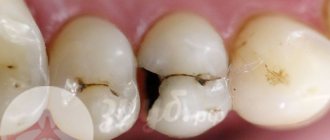A little physiology
The endometrium is the mucous membrane of the uterus that lines the organ from the inside. The shell is supplied with a large number of large blood vessels. Its main task is to create favorable conditions for implantation of the fertilized egg. The average normal thickness of the endometrium is 7 mm. Both thickening and thinning of this layer lead to failure in conception.
Normally, the endometrium consists of two layers - basal and functional. The main feature of the endometrium is its very high sensitivity to monthly changes in hormonal levels. A new menstrual cycle begins with the rejection of the functional layer of the mucous membrane. Outwardly this is manifested by menstruation. The concentration of hormones is at a functional minimum. After the end of menstruation, the concentration of estrogen, which is responsible for the growth of the endometrium, begins to gradually increase. The functional layer is gradually restored - this is the regenerative phase of the menstrual cycle. At the same time, a follicle matures in one of the ovaries.
Approximately in the middle of the cycle, when the amount of estrogen is at its peak, ovulation occurs - a mature egg is released into the abdominal cavity, then into the ampullary part of the fallopian tube, where conception occurs.
In place of the burst follicle, a corpus luteum appears, producing progesterone. Under its influence, glands begin to mature in the endometrium - the mucous membrane prepares for implantation of a fertilized egg. If conception does not occur, the levels of progesterone and estrogen begin to gradually decrease. As soon as it reaches a minimum, the functional layer will begin to be rejected again. A new menstrual cycle will begin.
Changes in the uterine mucosa during the cycle
What does polycystic ovary syndrome mean?
With some disorders in the body, the walls of the ovary thicken, as a result, a mature egg - a follicle - cannot leave it and enter the uterine cavity for fertilization. Remaining in the ovary and filling with fluid, the egg eventually turns into a small cyst.
Since this process is repeated many times, many such cysts are formed, and the phenomenon associated with this is called polycystic ovary syndrome. As a result, the maturation of eggs and the ovulation process are disrupted - the most common cause of infertility, which can be successfully treated and eliminated.
Diagnostics
Diagnosis of thin endometrium is based on three principles:
- interviewing the patient;
- gynecological examination;
- additional examination.
During the interview, the doctor details all complaints, clarifies their nature, time and possible cause of occurrence, and dynamics. This will be followed by a gynecological examination, during which the doctor may identify some causes of thin endometrium, such as underdeveloped uterus or congenital anomalies.
Additional research methods are used:
- flora smears;
- laboratory methods to identify the causative agent of infectious diseases;
- tests to determine the level of hormones in the blood;
- ultrasound examination;
- CT;
- MRI;
- hysteroscopy;
- diagnostic laparoscopy.
Based on the results of additional research methods, the doctor will make a final diagnosis and prescribe treatment.
Endometrial thickness in different phases
Treatment. How to grow the endometrium?
The first thing you need to do is change your lifestyle a little. Exercise daily - it increases blood flow in the uterus and helps build up the mucous membrane. Even a little physical activity (running, abdominal exercises, swimming) for half an hour helps improve the situation. If your work requires you to sit for long periods of time, try to get up and walk around for 3-5 minutes per hour.
Pay attention to your sleep - it should last at least 7-8 hours a day. The fact is that the balance of estrogen and progesterone is restored during sleep. Go to bed and get up at the same time, around 10-11 pm. Do not watch TV or read books in bed - the bedroom should be associated only with sleep. Develop certain habits that will help you fall asleep. This could be a warm shower, a massage session and other unique rituals. It is best to fall asleep in a cool and dark room.
Try to reduce the level of psycho-emotional stress. Chemicals produced during stress increase blood vessel tone and disrupt hormonal balance. As a result, blood flow in the uterus worsens and the endometrium becomes thinner. If it is impossible to completely get rid of stress, try to reconsider your attitude towards it, use various relaxation methods, for example, yoga, aromatherapy. This will help improve health and grow the endometrium.
Change your diet. Our diet significantly affects the possibility of conception. Increase the amount of whole grains, fresh vegetables and fruits, especially those rich in vitamin C, lean meats and fish. Limit or eliminate your intake of trans fats and processed foods as much as possible. Strictly dose the amount of simple carbohydrates, and you can build up the mucous membrane. Take herbal supplements. Unfortunately, herbal preparations currently do not have an evidence base. Nevertheless, many doctors advise their patients to take dietary supplements that promote the production of estrogen. You should consult your healthcare professional before taking dietary supplements. He will select the most effective means.
Increase vitamin E in your diet. The second name of the substance is tocopherol, or fertility vitamin. You can find it in various types of nuts, raw pumpkin, sunflower and sesame seeds, chard, spinach, mustard greens, parsley, avocado, olives, and almost all vegetable oils. The dose of tocopherol and duration of use should be obtained from your doctor.
To build up the endometrium, undergo an acupuncture session. Here it is important to choose the right specialist who is well versed in the localization of biologically active points responsible for blood flow. Acupuncture helps dilate blood vessels and improve blood supply to the uterus. As with taking dietary supplements, you should consult your doctor before undergoing acupuncture.
Avoid anything that negatively affects the condition of blood vessels:
- quit smoking;
- limit caffeine intake;
- anticongestants - vasoconstrictors, antiallergic.
See your doctor. Even if you have regular menstruation, but conception does not occur, this is a reason to visit a gynecologist. Infertility has many causes. The doctor will help determine exactly what your problem is and prescribe treatment.
Most likely, the doctor will recommend hormone therapy using estrogen. This could be a tablet, hormonal patch, gel, cream or spray. Treatment with estrogens is contraindicated in the presence of malignant diseases, an increased tendency to form blood clots, or drug intolerance. If you have one of these diseases or are allergic to any medications, be sure to tell your doctor before starting treatment. With your doctor's permission, take vasodilators. To grow the endometrium, you need to supply it with oxygen and nutrients. For this purpose, the doctor will recommend vasodilators. They improve blood flow in the uterus and promote endometrial growth. If you have symptoms of uterine endometrial depletion and are planning to have children, consult your doctor immediately.
Life after a frozen pregnancy
A non-developing pregnancy, even in the earliest stages, is a serious psychologically traumatic factor for the whole family. The most important question is “Why did this happen?” doctors often leave no answer. However, we tried to name the main reasons in the previous article.
But in fact, it is much more important to answer another question: “What to do now and how to prevent it in the future?” First of all, it is necessary to resolve the issue of evacuation of the products of conception from the woman’s uterus.
Waiting tactics
If the pregnancy has stopped developing within a short period of time, you can simply wait. In 2010, the results of a study1 were published, in which 282 women with undeveloped short-term pregnancies took part.
203 patients agreed to watchful waiting. Within two weeks after diagnosis, the uterine cavity emptied spontaneously in 61%. With anembryony (when the fertilized egg develops perfectly, but there is no embryo in it), self-cleaning of the uterus occurred in 53% of cases, and in case of embryo death - in 35%.
In more than a third of women (36.5%), the fertilized egg did not go away on its own; doctors had to switch to using other methods. Only 2.5% experienced heavy bleeding or infectious and inflammatory complications during the two weeks of waiting, which required emergency medical care.
In our country, wait-and-see tactics are not prohibited, but they are not very encouraged. Our distances are long. In case of bleeding, you can wait only in a 24-hour hospital. Despite the fact that almost half of patients have a good chance of avoiding medical interventions, this strategy is still considered risky and is not common in practical healthcare.
Medical evacuation
The expulsion of a dead fertilized egg from the uterine cavity can be done with the help of medications (prostaglandin analogues). This is a worthy alternative to the surgical method, and today it is chosen by 20% of women. The effectiveness of drug expulsion varies widely - from 13 to 96% - and depends on the stage of pregnancy, the type of anomaly, the dose of the drug used and the route of administration. The procedure can be performed on an outpatient basis or in a 24-hour hospital setting. Control ultrasound is performed after 10–14 days.
The advantages of the medicinal method include the absence of painful procedures, anesthesia and anesthesia. The disadvantages are the likelihood of fairly prolonged bleeding and some chance that the procedure will be ineffective. The legality of this procedure in the Russian Federation was finally established in 2016 by the Federal Clinical Protocol2.
Surgery
Back in 2006, at the XVIII Congress of FIGO (International Federation of Obstetricians and Gynecologists) in Kuala Lumpur (Malaysia), it was proposed to consider a non-developing pregnancy combined with chronic inflammation of the endometrium (inner lining of the uterus) in 100% of patients, regardless of the cause of gestational arrest. This means that now, after the diagnosis of “non-developing pregnancy,” the doctor must put a comma and add “chronic endometritis.” And this also means that today the tactics of emptying the uterine cavity have been fundamentally changed. The barbaric method of curettage of the uterine cavity, which was used for many years in the Russian Federation, is now a thing of the past.
Today, all over the world (Russia is also catching up), gentle vacuum aspiration of the contents of the uterine cavity is considered the standard. If curettage required general anesthesia, then vacuum aspiration in most cases can be performed on an outpatient basis using local anesthesia. The procedure is much shorter in time and much less traumatic. The advantages of this tactic include rapid completion of the process, the ability to stop bleeding and remove infected tissue in complicated cases of the disease.
One of the advantages of surgical tactics (vacuum aspiration) is the ability to conduct studies of the removed material. Firstly, this is a morphological study (histology), which will be carried out by a pathologist. Secondly, this is a cytogenetic study that allows us to study the chromosome set of the failed fetus. Thirdly, this is a molecular genetic study, which is especially good at identifying chromosomal abnormalities. Such analyzes help answer the question “Why did this happen?” and plan further tactics, however, given the high cost, they are not mandatory and are carried out at the request of the woman.
Life after loss
After the products of conception are evacuated from the uterine cavity, the most important thing begins. First, it is necessary to immediately begin treatment for chronic endometritis. Therapy is carried out in the first 3 months after pregnancy loss and may include hormonal correction, physiotherapy, and spa treatment. Antibiotics are prescribed according to strict indications, only in cases where the influence of infectious factors has been proven. Secondly, we need to start preparing for the next pregnancy. The optimal period for conception occurs already 3-6 months after the “frozen” pregnancy, so there is no time to cry, we need to start working.
To prevent gross developmental anomalies and defects incompatible with the progression of pregnancy, you should urgently start taking medications with folic acid. It is important to remember that folate levels build up very slowly, so you should start immediately after pregnancy loss. Only in this way can normal neurulation be ensured (formation of the neural tube during embryogenesis). Since people cannot live on folate alone, doctors recommend finding and eliminating deficiencies of other vitamins and microelements, primarily B vitamins (B6 and B12), vitamins E and D, iron, calcium and iodine.
Starting to take folates after pregnancy does not play any role: everything that could break has already broken. It is important to consider that in Russia every second woman is a carrier of a defective allele of the gene encoding the enzyme 5-methyltetrahydrofolate reductase (5-MTHFR). Because of this, folic acid may be poorly absorbed. We talked about the heroic MTHF here.
If the failed pregnancy was desired but unplanned, preconception preparation should be undertaken in accordance with Federal clinical guidelines. It is important not to forget to sanitize all foci of chronic infection (especially teeth and ENT organs), eliminate functional disorders of the digestive tract in the form of constipation and dyskinesia.
Training tasks include the identification and treatment of extragenital diseases: arterial hypertension, diabetes mellitus, hypothyroidism, systemic connective tissue diseases, kidney and urinary tract diseases, including infectious diseases. Getting rid of alcohol, nicotine, drug addiction, and correcting eating disorders are absolutely mandatory.
The most important thing is not to give up, don’t miss the little things and believe that everything will definitely work out.
Oksana Bogdashevskaya
Photo istockphoto.com
1 Casikar I. et al. Expectant management of spontaneous first trimester miscarriage: prospective validation of the 2-week rule // Ultrasound. Obstet. Gynecol. 2010. Vol. 35(2). P. 223–227. [PMID: 20049981]
2 Miscarriage in early pregnancy: diagnosis and management tactics. Clinical recommendations (treatment protocol). M., 2016.










